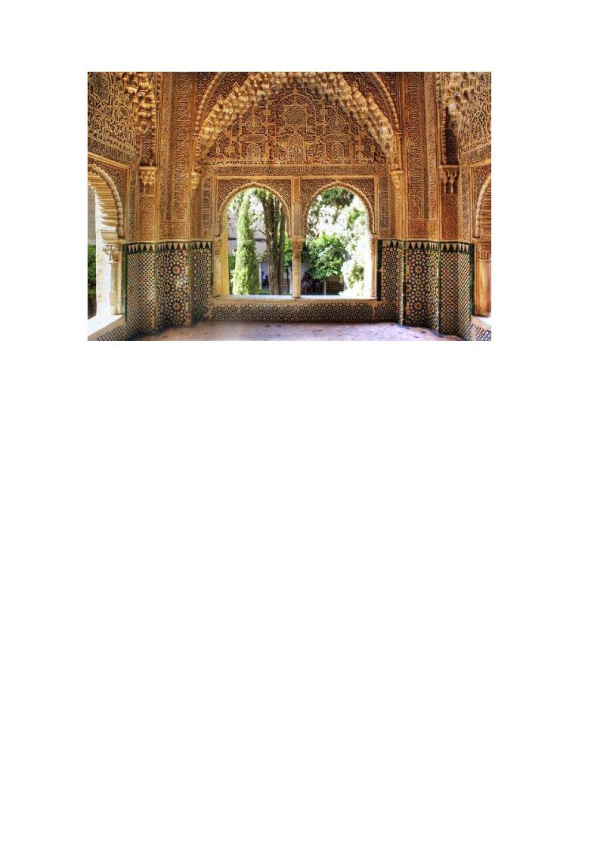
Top 10 Tourist Attractions in Spain
Funnily enough for those who think mainland Spain is just about sun, sand and sea there is only one beach within the list of Spain's top tourist attractions and believe it or not it is on the north coast!
Spain is far more than just sand and sangria with an incredible wealth of history, culture and tradition. From the green hills of Galicia to the snowy mountains of Sierra Nevada and the desolate deserts of Almeria and all along this scenic route there is an endless choice of fascinating places to visit. These were the top 10 tourist attractions for 2012 :
Nº1 Alhambra
Granada's Alhambra Palace is Europe's favourite tourist destination. In 2012, a total of 2.26 million visitors went to explore this spectacular Arab complex which dates back to the Mediaeval era in Spain – an increase on the 2.18 million in 2011, which shows that the recession is no barrier to enjoying this historical gem.
Nº 2 Mezquita de Cordoba
The Great Mosque -Aljama- of Cordoba, built during the period of Moorish occupation, is the most splendid Islamic monument in the western world. Its construction commenced in 785, when Abd-ar-Rahman established Cordoba as capital of al-Andalus, on the site of an ancient church dedicated to San Vicente and was extended during successive periods by Abd-ar-Rahman II, Al-Hakam II and Almanzor.
Nº 3 El Escorial
The Escorial is a vast building complex located in San Lorenzo de El Escorial, near Madrid, in central Spain. The building is the most important architectural monument of the Spanish Renaissance. Construction of El Escorial began in 1563 and ended in 1584. The project was conceived by King Philip II, who wanted a building to serve the multiple purposes of a burial place for his father, Holy Roman emperor Charles V; a Hieronymite monastery; and a palace.
Nº 4 La Sagrada Familia
The Sagrada Familia is a large Roman Catholic church in Barcelona, and one of Spain’s most visited tourist attractions. It’s a design by Antoni Gaudí, a Catalan architect who worked on this project for almost 40 years until his death in 1926. The construction of the basilica began in 1882 and still as yet not finished.
Nº 5 Ibiza
Besides being the clubbing capital of the world, Ibiza also has an amazing natural beauty, a superb climate and a World Heritage site. Whether you want to lose yourself to the music of the world’s best DJs in Ibiza’s unmatched party scene or if you want to enjoy the astounding clear sea, warm sun, attractive coves and eventful beaches – or a bit of everything – Ibiza is certainly the right place.
Nº 6 Cuenca
Declared a World Heritage Site, Cuenca spreads out below the ruins of the Arab castle, the former fortress of Kunka. The modern area of this small city lies below on the Júcar plain. The old part of Cuenca is surrounded on three sides by a deep gorge carved out by two rivers, the Júcar and the Huécar. Cuenca is famous for its 15th Century "hanging houses" (casas colgadas), that appear to be hanging on to the cliffs edge.
One of these houses is the Museum of Spanish Abstract Art, and is one of the finest of its kind.
Nº 7 Aquaduct of Segovia
The Aqueduct of Segovia is one of the best-preserved monuments left by the Romans in Spain. The ancient aqueduct carries water 16 km (10 miles) from the Frío River to Segovia and was built of some 24,000 massive granite blocks without the use of mortar. Probably constructed around 50 AD it still provided water to the city in the 20th century.
Nº8 La Concha
Protected from strong winds by steep cliffs and islands, La Concha in San Sebastian is said by many to be one of the best city beaches in Europe, let alone Spain. Here you can go surfing, walk along the promenade in search of good restaurants and enjoy the beautiful views of the beach.
Nº 9 Pamplona – Running of the Bulls
The Pamplona encierro is the most popular in Spain. It is the highest profile event of the San Fermin festival, which is held every year from July 6–14. The first bull running is on July 7, followed by one on each of the following mornings of the festival, beginning every day at 8 am. Participants must be at least 18 years old, run in the same direction as the bulls, not incite the bulls, and not be under the influence of alcohol.
Nº 10 Palacio Real
The Palacio Real de Madrid ( Royal Palace of Madrid) is the official residence of the Spanish Royal Family in Madrid, but is only used for state ceremonies. King Juan Carlos and the Royal Family do not reside in the palace, choosing instead the more modest Palacio de la Zarzuela on the outskirts of Madrid. The palace is owned by the Spanish State and administered by the Patrimonio Nacional, a public agency of the Ministry of the Presidency.

